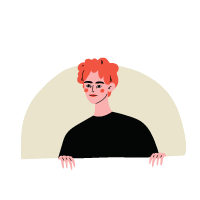Framework for Universal Design in Higher Education
Updated: March 16, 2021

In the webinar, Toolkit for Inclusivity in Higher Education, Sheryl Burgstahler, author of Creating Inclusive Learning Opportunities in Higher Education, outlined a framework for incorporating UD into the classroom environment. Let’s break it down.
Why Should You Use a Universal Design Framework?
The Center for Universal Design (UD) defines UD as, “the design of products and environments to be usable by all people, to the greatest extent possible, without the need for adaption or specialized design.”
For example, 98.6% of students find captions helpful because captions help with focus and comprehension. Providing captions for all classes is a form of UD because it creates a better learning experience for all students and provides accommodations for deaf and hard of hearing students.
The universal design framework will allow you to identify places in your old, new, and current practices that could benefit from a universal design makeover. It will also provide a structure to help you continuously improve your programs and create an inclusive campus.
Scope → Define → Principles → Guidelines → Practices → ProcessScope
Taking time to define your scope is fundamental for UD. In higher education, your scope could cover:
- Instruction
- Services
- Technology
- Physical Spaces
- Project, conference exhibits, presentations, and professional organizations
The beauty of UD is that it can be applied to a range of programs, practices, and physical places.
Definition
Define your design strategy. There are many definitions for UD with various approaches. You’ll want to take time to review which definition fits with the scope and goals of your UD program.UD isn’t the only proactive method for design. Other methods include:
- Acessible design: focuses on design for people with disabilities.
- Usable design: focuses on the usability of the product.
- Inclusive design: focuses on whether many groups of people are able to use the product.
- Barrier-free design: focuses on barriers in a physical environment.
- Design for all: similar to universal design.
Principles & Guidelines
Principles and guidelines of UD. There are seven priciples of UD, three principles for universal design for learning (UDL), and four Web Content Accessibility Guidelines (WCAG).
In a nutshell, these principles advocate for instructors to:
- Provide multiple ways for participants to learn and to demonstrate what they have learned.
- Provide multiple ways to engage.
- Ensure all technologies, facilities, services, resources, and strategies are accessible to individuals with a wide variety of disabilities.
To best apply all these principles, first look at your current practices and ask, “which principle does this practice relate to?” Next, ask, “how accessible is this to people with disabilities?” Use UDL checklists to ensure your practices address all types of learners.
- UD 1: Equitable Use
- UD 2: Flexibility in use
- UD 3: Simple and intuitive
- UD 4: Perceptabile information
- UD 5: Tolernace for error
- UD 6: Low physical effort
- UD 7: Size and space for approach and use
- UDL 1: Multiple means of engagement
- UDL 2: Multiple means of representation
- UDL 3: Multiple means of action and expression
- WCAG 1: Perceivable
- WCAG 2: Operable
- WCAG 3: Understandable
- WCAG 4: Robust
Practices
Practices for UD. The next step in the universal design framework is to think about how you are going to apply UD to your program.The first step is to research the best practices in your field. Next, consider the diverse characteristics of the potential user.
A strong framework will integrate the UD principles and best practices in the field.
Finally, you need to start planning the accommodations. Think about all your students and what barriers they may face to accessing the information you provide. Keep those barriers in mind as you design your course and continuously ask, “how can I make it better?”
Process
Process for UD. The final step in the universal design framework is to develop a process for review.
Every semester, evaluate your plan, then go back and refine it. Understand that you will probably have holes in your first iteration and that there is always room for improvement.
Inclusivity in Higher Education with the Universal Design Framework
With UD, we move away from teaching to the “average” student and instead embrace the diversity of the student body. With UD, we allow students to learn within their strengths, fostering an environment of inclusivity, creativity, and engagement.
How have you incorporated UD in the classroom? Let us know in the comments!
Further Reading

Subscribe to the Blog Digest
Sign up to receive our blog digest and other information on this topic. You can unsubscribe anytime.
By subscribing you agree to our privacy policy.








